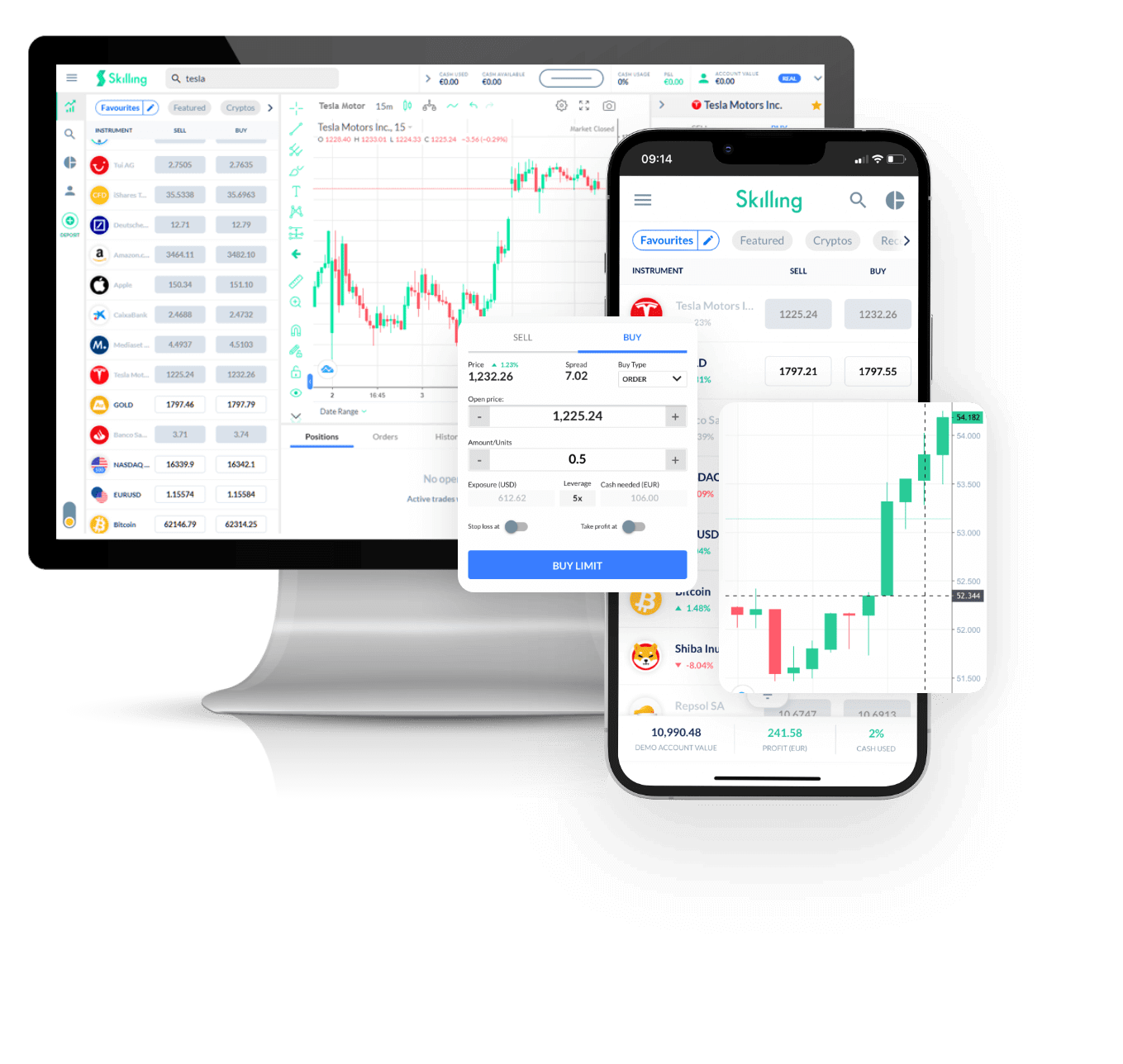Loading...
Shopify Shares
[[ data.name ]]
[[ data.ticker ]]
[[ data.price ]] [[ data.change ]] ([[ data.changePercent ]]%)
Low: [[ data.low ]]
High: [[ data.high ]]
About
History
Differences
About
History
Differences
Canadian firm Shopify has become an e-commerce giant since its launch in 2006. It developed a string of proprietary e-commerce plugins and platforms, suitable for online shops and in-store point-of-sale systems too. As of July 2022, the company had grown into one of Canada’s 20 largest publicly listed firms by market capitalisation.
The premise of Shopify was to simplify the process of running an online business. It was soon made possible for entrepreneurs to view and manage their product inventory using the native Shopify mobile apps. By 2015, it had grown so much that Shopify filed for an IPO on the New York and Toronto Stock Exchanges.
The Shopify share price was initially listed at $28, significantly higher than its initial offering price of $17 per share. In 2021, its total revenues exceeded $4.6 billion, with over 1.7 million online retailers actively using Shopify’s platform today.
It was pretty much one-way traffic for Shopify stock following its long-awaited IPO. The Shopify share price continued to rise – and significantly at that. During the peak of the Covid-19 pandemic, when e-commerce became more vital than ever before for homes and businesses – Shopify shares peaked at $162.50 in July 2021.
However, it’s been less promising for owners of Shopify stock since, with 2022 proving to be a turbulent period, shedding over 68% of its value. This was due largely to rising inflation, which was hitting the bottom line of online retailers and stockists hard. Meanwhile, the cost-of-living crisis has also impacted the purchasing power of consumers, putting some online firms at risk.
Within its Q3 2022 financial results, Shopify revealed it has $4.9 billion in cash, cash equivalents and marketable securities, although it posted an adjusted net loss of $30m.
Given that the Shopify stock is part of a high-growth e-commerce industry, it’s possible that equities like these can offer significant long-term gains. However, that’s not always the case, as macroeconomic headwinds can play havoc with sectors intrinsically linked to consumers.
With uncertainty and volatility likely to surround the Shopify stock and other e-commerce shares in the short-to-medium term, speculating on the price of Shopify shares could be a sensible alternative. By using a contract for diference (CFD) broker, you can trade the rise (and fall) of an equity’s price, without having to own the underlying asset.
| Swap long | [[ data.swapLong ]] points |
|---|---|
| Swap short | [[ data.swapShort ]] points |
| Spread min | [[ data.stats.minSpread ]] |
| Spread avg | [[ data.stats.avgSpread ]] |
| Min contract size | [[ data.minVolume ]] |
| Min step size | [[ data.stepVolume ]] |
| Commission and Swap | Commission and Swap |
| Leverage | Leverage |
| Trading Hours | Trading Hours |
* The spreads provided are a reflection of the time-weighted average. Though Skilling attempts to provide competitive spreads during all trading hours, clients should note that these may vary and are susceptible to underlying market conditions. The above is provided for indicative purposes only. Clients are advised to check important news announcements on our Economic Calendar, which may result in the widening of spreads, amongst other instances.
The above spreads are applicable under normal trading conditions. Skilling has the right to amend the above spreads according to market conditions as per the 'Terms and Conditions'.

Trade [[data.name]] with Skilling
All Hassle-free, with flexible trade sizes and with zero commissions!*
- Trade 24/5
- Minimum margin requirements
- No commission, only spread
- Fractional shares available
- Easy to use platform
*Other fees may apply.
FAQs
Which are the competitors of Shopify shares?
+ -
Shopify (NYSE: SHOP) operates in the e-commerce platform market, which is highly competitive. Some of its main competitors in this market include: Amazon (US100: AMZN), Magento (owned by Adobe), Salesforce (NYSE: CRM), Weebly (owned by Square)
It's worth noting that while all these companies compete in the same general space as Shopify, they may have different strengths, weaknesses, and areas of focus. Some may cater more to specific niches or industries, while others may offer more customization options or marketing features. Ultimately, the choice of which platform to use depends on a business's specific needs and goals.
Who owns most Shopify shares?
+ -Shopify Inc. (NYSE: SHOP) is a publicly traded company with its headquarters located in Ottawa, Canada. As of Feb 2023, the biggest stakeholders in Shopify are Baillie Gifford & Co., Morgan Stanley Investment Management LLC, Capital Research & Management Co., T. Rowe Price Associates and The Vanguard Group, who collectively own 21.07% of the company's shares.
Do Shopify pay dividends?
+ -Shopify does not pay dividends to its shareholders. This means that investors do not receive a dividend payment from Shopify, but may be able to benefit from capital appreciation of the company's stock price over time. Investors may also benefit from the appreciation of the value of Shopify's services and products, as well as its overall reach in the e-commerce industry.
Why Trade [[data.name]]
Make the most of price fluctuations - no matter what direction the price swings and without capital restrictions that come with buying the underlying asset.
CFDs
Equities
Capitalise on rising prices (go long)
Capitalise on falling prices (go short)
Trade with leverage
Hold larger positions than the cash you have at your disposal
Trade on volatility
No need to own the asset
No commissions
Just low spreads
Manage risk with in-platform tools
Ability to set take profit and stop loss levels

